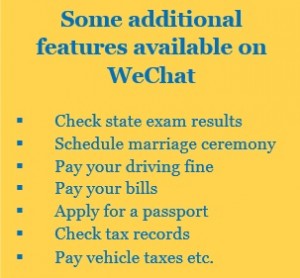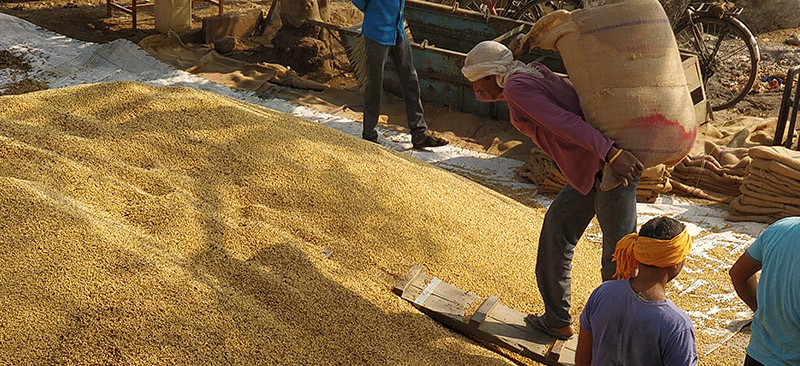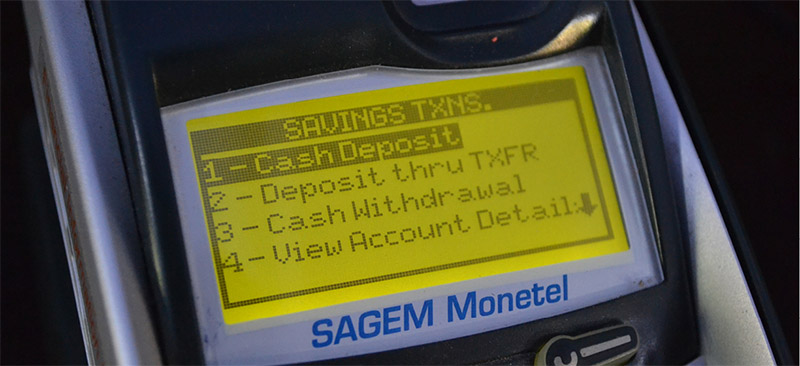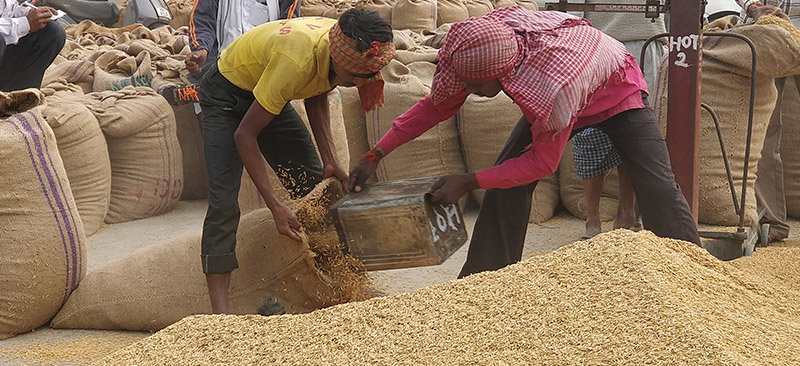Digital Financial Services (DFS) is growing rapidly in Indonesia. However, agent and account activity remains low at around 20%. Further, awareness about mobile money/digital financial services is also low 8%. One of the key reason for low activity and limited uptake is that the products/services offered through digital channels do not meet the needs of the customers.
Blog
Can instant messenger disrupt the digital payments market in India?
What’s up with WhatsApp?
 Have you ever wondered about the idea of sending anything other than photos, emojis, videos and web links through popular instant messenger (IM) apps to your friends? Have you ever wanted to send money to a friend instantly when she reminds you about the bill that you were supposed to split, over one of the most popular instant messenger (IM) apps such as WhatsApp? Well, if market speculation is to be believed, then you soon can! You will be able to send money to anyone in your WhatsApp contact list as simply as sending them a message. Facebook-owned WhatsApp, the world’s dominant messaging application with over 1.2 billion users, is planning to branch out its messaging service business into the booming digital payments space of India in a few months – says The Ken.
Have you ever wondered about the idea of sending anything other than photos, emojis, videos and web links through popular instant messenger (IM) apps to your friends? Have you ever wanted to send money to a friend instantly when she reminds you about the bill that you were supposed to split, over one of the most popular instant messenger (IM) apps such as WhatsApp? Well, if market speculation is to be believed, then you soon can! You will be able to send money to anyone in your WhatsApp contact list as simply as sending them a message. Facebook-owned WhatsApp, the world’s dominant messaging application with over 1.2 billion users, is planning to branch out its messaging service business into the booming digital payments space of India in a few months – says The Ken.
This post attempts to cover the details of this logical, (and necessary?) move by WhatsApp and present how the social messaging app can possibly simplify the user experience while making digital payments in India.
Is there a business case for WhatsApp to launch payments business?
 Well, the answer is YES! The idea of WhatsApp is somewhat similar to China’s dominant messaging application, WeChat. WeChat, first released in 2011, has flourished due to favourable government regulations as similar foreign messaging apps such as Facebook Messenger and WhatsApp were blocked in China for several years.
Well, the answer is YES! The idea of WhatsApp is somewhat similar to China’s dominant messaging application, WeChat. WeChat, first released in 2011, has flourished due to favourable government regulations as similar foreign messaging apps such as Facebook Messenger and WhatsApp were blocked in China for several years.
With over 700 million active users in China, WeChat is more than just a messaging app – it follows an app-within-an-app model containing over 10 million third-party apps and even allows a company to make an app using the platform. WeChat has built its own wallet which requires users to first add money in it and then use the services or conduct transactions.
What could be driving digital payments for WhatsApp?
 Despite impressive active user numbers, WhatsApp still lacks revenue sources. Facebook, which bought WhatsApp for a hefty $19 billion, is yet to figure out a sustainable monetisation model to leverage its massive user base. It is testing tools to use the application to communicate between businesses and individuals, and charge businesses for this service.
Despite impressive active user numbers, WhatsApp still lacks revenue sources. Facebook, which bought WhatsApp for a hefty $19 billion, is yet to figure out a sustainable monetisation model to leverage its massive user base. It is testing tools to use the application to communicate between businesses and individuals, and charge businesses for this service.
Given that WhatsApp has refrained from introducing third-party ads and does not plan to monetise its messaging service for end users, it may strike gold with digital payments in India.
Why India?
- Highest active user base: WhatsApp has over 200 million monthly active users in India i.e. 20% of its global user base and highest in any single country. On an average, an Indian smartphone user spends three hours a day on phone and 47% of this is spent on communication apps such as WhatsApp.
- WhatsApp is installed on 90% smartphones: With over 300 million smartphones usersin 2016, India is the second-largest smartphone market in the world. WhatsApp, the second most installed app, is on 90% smartphones in India. On December 31, 2016 alone, WhatsApp users in India sent 14 billion messages!
- Free-market and India Stack / UPI platform: Unlike China, India has a free-market economy, is receptive to foreign companies, and offers its platforms to others to build upon. For instance, WhatsApp is most likely to piggyback on Unified Payment Interface(UPIi ) – a core part of the India Stack API developed by the National Payment Corporation of India (NPCI).Furthermore, given the strict draft RBI guidelines for mobile wallets, integrating with UPI seems to be a better alternative for WhatsApp.
- Booming digital payments industry: A report by Google and BCG report forecast that digital payments industry will grow by 10 times to $500 billion by 2020, and contribute 15% of gross domestic product (GDP). It further says that non-cash transactions will exceed cash transactions in the economy by 2023.
Post demonetisation, the government has set a target to achieve 25 billion digital transactions in 2017-18. Further, most mobile wallets companies claimed sharp rise in their user base (in terms of app downloaded), transaction value and volume.
Who’s the competition?
Currently, the mobile payments market in India is dominated by Paytm, Mobikwik and Freecharge, offering a variety of services to the consumers. WhatsApp will need to find the compelling use cases for its users so as to attract and motivate the customers. Considering 200 million Daily Active Users (DAUs), WhatsApp ranks number one (in terms of usage) as compared to its nearest rival, Paytm, which ranks number 22 with 80 million active users. A few months back, Truecaller, partnering with ICICI bank, forayed into financial services and launched a UPI-based mobile payment service called “Truecaller Pay”. It allows over 150 million users of Truecaller app to instantly make P2P transactions and recharge their mobile number within the app itself.
Can instant messenger simplify digital payments?
With more than 90% of the smartphone owners having WhatsApp on their phone, using it for 169 minutes a day on an average, WhatsApp can integrate the payments platform and realise the potential of digital payments in India. To start with, IM should leverage the open architecture i.e. UPI and Bharat QR code, and offer at least two basic use-cases, i.e. P2P transfers and merchant payments.
For secure and instant P2P transfers, instant messenger can partner with a bank that has access to the UPI infrastructure. For offline payments at merchant outlets, IM can collaborate with a bank ready to deploy Bharat QR code – world’s first inter-operable payment acceptance solution based on QR code. A user can scan the QR code, while in-app, to pay and avoid carrying and physically swiping cards.
An interesting use case with IM would be make in-app payment while chatting. Assume you are chatting with your friends in an IM group and are planning to organise a party, where everyone decides to contribute some amount. Without switching to any other app, you can pay to the organiser in real-time by just entering the amount and your security PIN. This in-app feature of paying while chatting can lead to positive user experience and avoid the inconvenience of logging into other mobile payments apps.
In addition to the above use cases, WhatsApp can extend its services to tap other use-cases such as taxi payments (e.g. Uber or Ola), bill payments (e.g. electricity, water etc.) and ticket bookings among others.
Conclusion
Given their daily active user base, especially among smartphone users, IM apps such as WhatsApp have massive potential to influence the digital behaviour of the users irrespective of their age, groups and affinity to other digital payments solutions. As India continues to leapfrog on the path of digital innovation, it will be interesting to observe how WhatsApp evolves from a messaging app to add features like a payments plus app. Can WhatsApp become the WeChat of India and offer more than just payments? Well, only time will tell, but the next 3-5 years will be exhilarating for the payments space in India.
i UPI allows seamless peer to peer transactions from one bank account to another bank account using only a Virtual Payment Address (VPA) linked to the account and to the user’s phone without exposing any other financial identifiers.
Cash Coupons – A Viable Alternative?
After introducing the National Food Securities Act in 2013, Government of India mandated states to adopt the same by modifying their Public Distribution Systems (PDS). States had the option of choosing from two alternatives: Biometric Authentication of Physical Uptake (BAPU) and Direct Cash Transfers. The Department of Food & Civil Supplies, Karnataka decided to adopt a modified approach – Food Coupons. Based on its evaluation of this new system MicroSave advised the department to make additional changes to come up with a system called Cash Coupons. The cash coupon system addresses all the existing problems of PDS viz. leakages, quality and convenience. It does so by drawing the best from both BAPU and cash transfers to come with a viable third alternative.
Mobile Wallet Design for Oral Users
The briefing note is to accentuate the need to incorporate usability aspect in the designs of various payment portals and user interfaces. There is a need to customize the screens of various interfaces and portals in accordance to customers’ requirements.
“Usability is something which the consumer are expecting from a product. Whilst at one time it was expected that high tech products are complicated and usability was seen as a bonus, lack of usability is now seen as major source of discontent with consumer products.”
– Patrick Jordon
The effect of user characteristics on usability can be identified by their previous experiences with similar product and their knowledge relating to the task which is independent of the product being used to complete that task. Further it can also be identified by the population stereotypes, by paying attention to the needs of those with disabilities and also by emphasizing on age and gender characteristics of the beneficiaries.
“If we want to help people make better decisions in the future, then we need to understand the psychology of screens, and how people make choices in an age of too much information and too little working memory.”
– Shlomo Benartzi and Jonah Lehrer
Various component of usability which can be checked on field visits are guessability, learnability, experienced user performance, system potential and system reusability.
We were able to check only guessability and learnability, with help of the medium fidelity prototype, due to time constraints. However, many principles of usable design like consistency, visual clarity, language compatibility were also touched upon.
The Four Zones: A Missing Chapter in the Financial Inclusion Guidebook
As of March 24, 2017, a little more than 9 million dormant PMJDY accounts were frozen, because the account holders had not transacted in over a year. A great deal of effort has gone into government initiatives to increase financial inclusion, but perforamance indicators such as dormancy in the PMJDY accounts is a reason for worry. The Government of India’s Economic Survey Report 2016-17 too finds that active use of PMJDY accounts is 40% (active defined as at least one transaction completed in the last 90 days). There could be many reasons for poor account activity – it could be that the product delivery is not quite right (the Economic Survey highlights that distance from nearest bank and the number of people per branch might explain poor account activity rates), or that the products themselves are not suitable.
We sought to answer this riddle with our usual customer-centric approach. We focused on the four personas that represent the majority of the mass market that has been the target for financial inclusion in India: a farmer, a daily wage labourer, a clerk who works in the city, and a security guard.
Shankar Singh is a daily wage earner. Most of his earning of about INR 8,000 (USD 117) per month is committed for household essentials and debt repayment. Since he is risk averse, and wants to avoid the hassles caused by distance, low literacy levels etc., he saves in a box at home. When the money runs out, Shankar is susceptible to falling into debt. Jai Prakash is a security guard who earns a salary of INR 8,000 (USD 117) per month and by the third week, when the money runs out, he turns to his employer for an advance on his salary and/or to his friends for interest free soft loans. He prefers the ease of such informal borrowing avenues and discounts the unreliable nature (in case the employer or friend is unable lend him money) or costs (e.g. interest paid) of these sources of cash. Sundar Devi is a dairy farmer and her daily income amounts to about INR 20,000 (USD 294) per month. In many months, this is enough to manage her household expenses and even put away some savings. Vijay Thakur, a salaried clerk, earns a little under INR 20,000 (USD 294) a month and meticulously saves, invests in insurance and takes loans for specific goals like child’s education, weddings etc. In a financially stressed situation, Sundar Devi and Vijay Thakur compromise on savings and investments, and may even fail to honour monthly loan repayment instalments. Such financial turbulence can be due to sudden spikes in unforeseen expenditure such as sudden illness, an investment in a business opportunity, a family function, or a life event, etc. (Read more about their lives here).
The two of the key determinants for all four personas’ financial decisions are the quantum and frequency of income – representing ‘how much’ and ‘how often’ for the mass market. These two together define the ability of a family to meet regular household expenses, planned future expense and/or any eventuality. These two factors also play a significant role in paving the way for four discreet financial phases through which a household oscillates.
A household’s disposable income influences the financial behaviour, which changes as the household moves through these four phases:
- The comfort zone when money inflow is enough to meet household expenses;
- The fluid zone when the household money has almost run out;
- The stress zone when small loans are needed to smoothen consumption; and
- The blast zone when credit is not enough, or simply unavailable, and liquidating household (or in the very extreme cases, business) assets is the only way to sustain basic household financial needs.
The mass-market keeps moving through these four zones and a closer look will provide a deeper understanding of the financial choices adopted by them to navigate through these phases.
The household in these zones might have a PMJDY account in a branch close to home, but still lack financial robustness and income security to use these accounts. The challenge, as we see here, is developing a versatile set of tools to service the mass market whilst accommodating the vari0us and changing money management strategies of different households. For instance, how can we offer Shankar a formal savings product that satisfies his liquidity requirements (accessibility), small loans for Jai Prakash without high interest rates, and better investment options for Sundar Devi and Vijay Thakur so that money in the boxes at home can be unlocked, nurtured and grown?
Expecting financial inclusion programmes to succeed by relying on easy credit, a bank account, or enabling hassle free payments oversimplifies the complexity of the challenge. None of these laudable initiatives has attempted to create the behavioural changes that are essential for financial inclusion. As a result, they have only seen limited success – either for specific customer segments or for a specific geography (for instance, there are financial services specifically targeted for migrant labourers, DBT beneficiaries and bill payers). The mass-market prefers tools that provide them with a tangible, trustworthy, and easily understandable approach to manage their money. They want clear visibility into their money, and (ideally) how it is working for them. So, for example, they see and know the whereabouts of creditor/debtor and friends/relatives. They are looking for tools that help them quickly replenish their liquidity when the need arises, ideally without trapping them in debt spirals.
While interacting with Shankar, Sundar Devi, Vijay, and Jai Prakash we kept asking ourselves if there is a product/service that can work for them both in the comfort zone and the stress zone. We did not find any. In fact, we found that existing financial services designs fall short of incorporating geographical, cultural, and literacy heterogeneity, critical to enhance usability. For example, leading mobile wallets rely on aesthetic abstract icon designs supported by text to serve its customers. However, when unassisted, such abstractions mean very little to an illiterate or a neo-literate person like Shankar and Jai Prakash. (Please see our recent work that identifies new dimensions to mobile wallet designs for illiterate and innumerate people).
We are at a juncture that calls for introspection on current design concepts to create a new breed of financial tools (not products) for the mass market. With myriad complex cognitive factors defining financial behaviour, creating products for specific customer segments or use cases will always have limited reach. Given the agenda of financial inclusion, service providers should create a suite of flexible and intuitive money management tools that cater to multiple use-cases, and meet the requirements in all the four zones for the multiple segments of mass market.
Understanding Karnataka’s Food Coupon System
The Department of Food and Civil Supplies, Karnataka began reforming public distribution by rolling-out Food Coupons in Bangalore. While it was a well-meaning and thought-out idea it resulted in much heartburn among beneficiaries. While beneficiary distress was justified, the system itself was a large improvement over the one it replaced as it increased transparency and enabled better tracking of demand. The hiccup was only caused due to hurried implementation and poor communication – a common feature among many large scale government programs.





